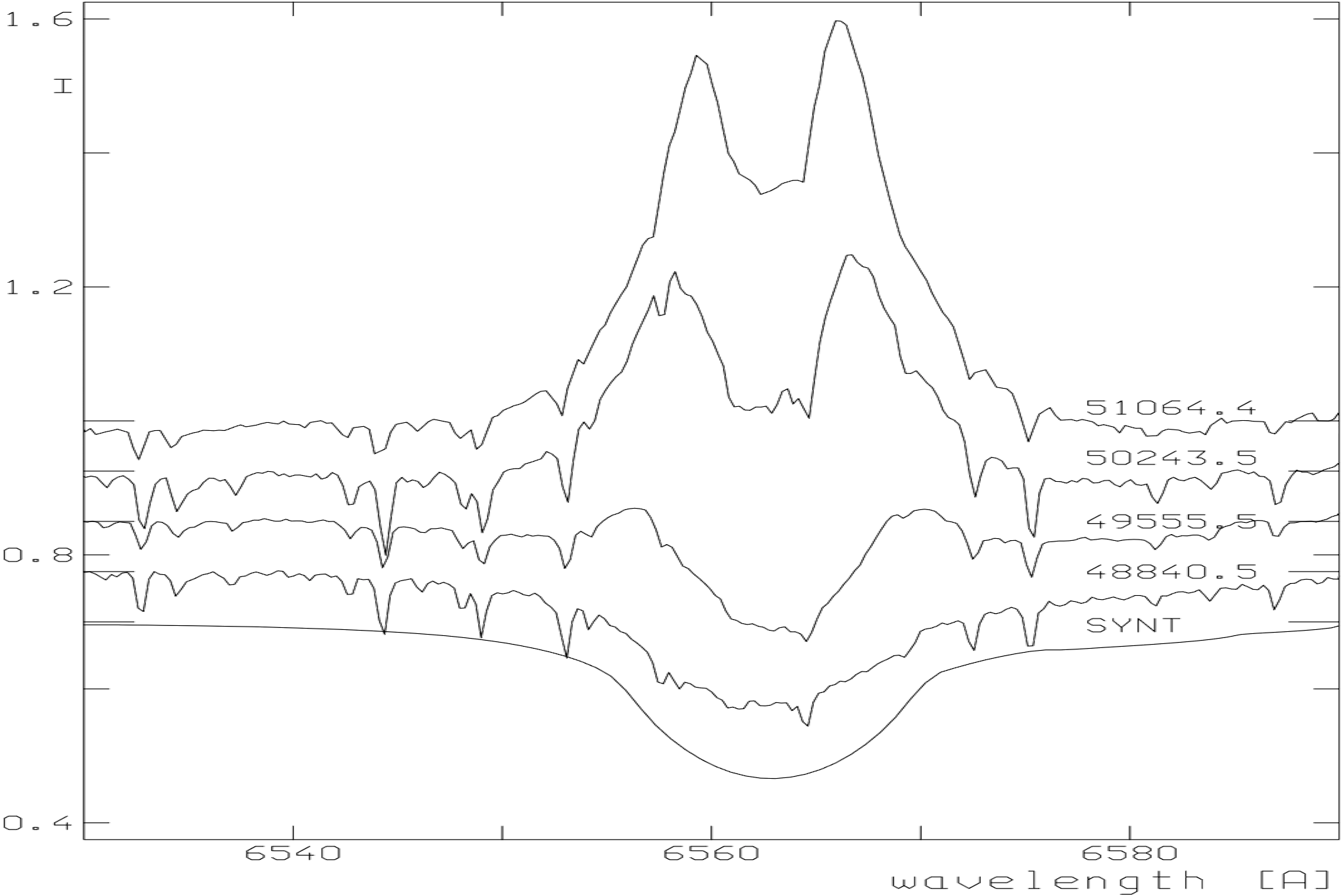Be stars
Be stars are hot stars that sporadically eject matter, forming a circumstellar disk. How these matter ejections occur is a mystery since their discovery 150 years ago. Their rapid rotation certainly plays a major role, but stellar pulsations also contribute to the energy input.
 |
||
|
Profiles over 6 years of Halpha 60Cyg (4 profiles above), compared to a synthetic spectrum of the pure photospheric line (below) (Koubský et al. 2000). |
The variations of the circumstellar disk can be observed via emission lines, notably Halpha, whose intensity increases or decreases as the disk is filled by new ejections of matter, or diffuses slowly towards the interstellar medium. In order to understand the Be phenomenon, it is necessary to accumulate spectra of Be stars over large time span. This allows us to observe the (unpredictable) ejections of matter and try to link them to the stellar properties. The old spectroscopic plates are therefore essential for this research because they make it possible to extend the measurements until the 60's.
 |
||
|
Artist's view of a Be star with its disk - Credits G. Perez - SMM, IAC. |